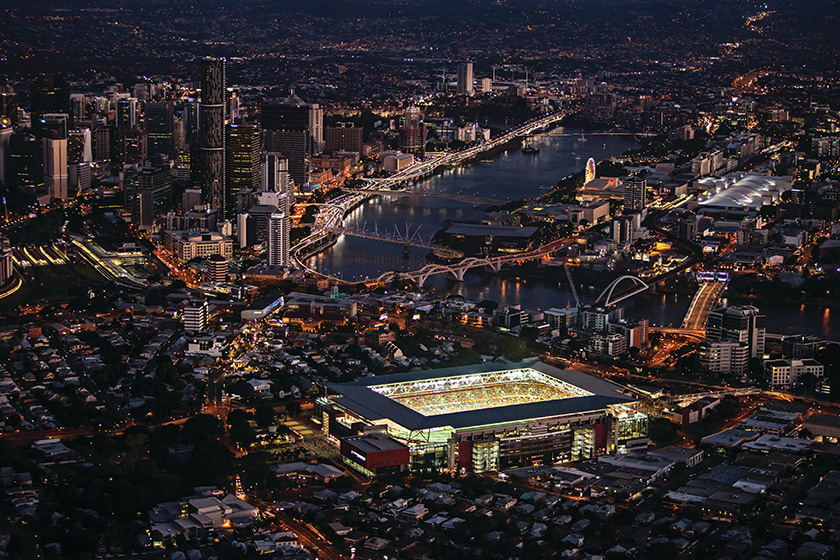ATO governance needs reform: IPA-Deakin SME Research Centre
The IPA-Deakin SME Research Centre has examined the shortcomings of the ATO’s governance model and proposed a Tax...
READ MORE
The economic impact of Taylor Swift is greater than the GDP of 50 countries. But the financial boost of live events is not restricted to Tay Tay. From sport to music and the arts, many events are very big business. Here’s how states assess their value and plan their line up.

As Taylor Swift’s Eras Tour – arriving in Australia in February next year – tore its way across the United States in 2023, economists had a challenging time explaining the immense pull of its financial orbit. In North America, the projected gross of ticket sales alone was US$2.2 billion. Perhaps more importantly, projected consumer spending, once again in the US alone, was US$5 billion.
The Wall Street Journal ran a story headlined It’s Taylor Swift’s Economy, and We’re All Living In It, that credited the artist’s tour as helping entire cities recover from the economic toll of the COVID-19 pandemic. It brought back tourism, the story said, and convinced people to open their wallets.
Time magazine ran a similar feature, The Staggering Economic Impact of Taylor Swift’s Eras Tour, pointing out that, only a third of the way in, it was already “the biggest tour of all time”.
“If Taylor Swift were an economy, she’d be bigger than 50 countries; if she was a corporation, her Net Promoter Score would make her the fourth most admired brand, and her loyalty numbers mimic those of subjects to a royal crown,” Dan Fleetwood, President of QuestionPro Research and Insights, said in a GlobeNewsWire report.
Concertgoers were each spending around US$1,300 per show on tickets, merchandise, food, drink and travel. ‘Per show’ is important, because 91 per cent said they’d spend the same amount to do it again.
Major live events are big business. In Australia, the resources poured into attracting such events as the Women’s FIFA World Cup, the Olympic Games, Formula One races, stage shows such as Moulin Rouge! and arts festivals such as Melbourne’s Rising reveal the value they represent to local economies.
When tickets for the Eras Tour went on sale in Australia, the Victorian state government had to declare it a major event to bring the ticket sales under the protection of anti-scalping legislation. Those Australian tickets cost $80 to $380. Packages that included special seating and merchandise sold for up to $1,249.
Of course, the recent Commonwealth Games debacle in Victoria proves that not all events bring rivers of gold.
Having agreed to host the 2026 Games in regional Victorian towns and cities, in July 2023 the Office of the Premier of Victoria announced a major backdown – it would not be going ahead.
“With significant planning work and extensive market soundings completed, it is now certain that the cost of hosting the Regional Victorian Commonwealth Games will exceed $6 billion – more than twice the estimated economic benefit the Games would bring our state,” the Premier’s office announced.
“We were pleased to be asked to host the 2026 Commonwealth Games – but not at any price,” Premier Daniel Andrews said.
“I think all Victorians would agree that more than $6 billion is just too much.”
Regardless of agreement with that cost-benefit analysis, Andrews’ statement papers over an important consideration – why this calculation was not completed before the state agreed to host the Games.
Much of the original cost analysis, it has been reported, was based on the cost of the 2018 Commonwealth Games held on the Gold Coast.
But while the Gold Coast event was a centralised event in a region with well-established tourism infrastructure and close to Brisbane, the Victorian event was across six small cities with relatively little relevant infrastructure (think stadia and athlete accommodation) in place.
The transport budget almost tripled from the original analysis, and the police and security budget more than doubled. The fine for the cancellation of the hosting of the Commonwealth Games was $380 million.
Set against a $6 billion price tag for going ahead, that’s perhaps a pittance. But it is still $380 million that could have remained in the state’s budget and funded much needed public services.
Which makes accurately calculating and analysing costs and returns essential.
CEO of Tourism and Events Queensland Patricia O’Callaghan is responsible for ensuring major events held in Queensland contribute positively to the state’s economy.
“At the end of the day, events are all about the visitor economy. Events are a reason to travel into the state. They’re a driver of visitors into the region,” O’Callaghan says.
“Tourism at the moment is worth about $30 billion to the state. But we also put a value on our events calendar. The value of the events that we support in the calendar is about $750 million at the moment. We have an ambition to grow that to $2 billion by 2032.”
How does Tourism and Events Queensland value each event? O’Callaghan says that it’s important that at least some of the metrics are measured by independent entities, so figures come from outside the realm of perceived political influence.
“The government is investing in these events, so we have to find a way to provide a report back to Queenslanders on the return on investment,” she says.
“All events that we invest in are evaluated post-event by an independent third party. They conduct primary research, predominantly through attendee surveys. Then, we’ve got economic and tourism value reports that estimate the event outcomes.”

The NRL Magic Round keeps visitors to the Suncorp Stadium event in the region and generates $28 million.
Those value reports include overnight visitor expenditure, direct visitor nights, direct and incremental spend, and the number of visitors to Queensland for the event. This data offers the government and citizens a reliable read on how particular events have contributed to the economy – and how value might be maximised for future events.
For example, the National Rugby League’s Magic Round, a round of the NRL in which every match is played at Brisbane’s Suncorp Stadium over one weekend, attracts around 140,000 attendances and generates $28 million for the local economy.
Developed jointly between the NRL and Tourism and Events Queensland, the NRL Magic Round and its various pre- and post-match attractions hold visitors in the region longer than they’d stay for just one match.
O’Callaghan says that major events aren’t just about economic gain. Such measures are important, but so are metrics such as community pride, profile, storytelling and the Queensland brand.
“These are harder to measure, but they’re a really important part of what we do,” O’Callaghan says.
“We’ve got a focus, moving forward, to use events to tell the stories of First Nations people. Events are a great way for us to provide a platform to tell some of their rich history. Events also play a wonderful role in bringing people together in celebration.”
Quarterly sentiment research conducted by Tourism and Events Queensland in June 2023 revealed that 83% of Queenslanders believe it is important for the state to host events.
The same percentage believe it’s important for the Queensland Government to support events, and 81% believe their government should be actively involved in attracting and securing major events.
“The higher the community sentiment around an event, the more proud the people are,” O’Callaghan says.
“We know that proud communities come together more and support each other more. And so, events are a really important part of the social fabric.”
The FIFA Women’s World Cup, for example, was conservatively worth more than $30 million to Queensland, based on overnight visitors’ spending in the visitor economy, after eight games were hosted in the state. But just as important was what the event did for women’s sport, the community pride felt around the hosting and attendance of the matches, and the legacy the event left for football in Australia.
“It was a really great way to celebrate sport,” O’Callaghan says.
“But also, at the end of the day, the legacy of that tournament will be felt for a long time to come.”